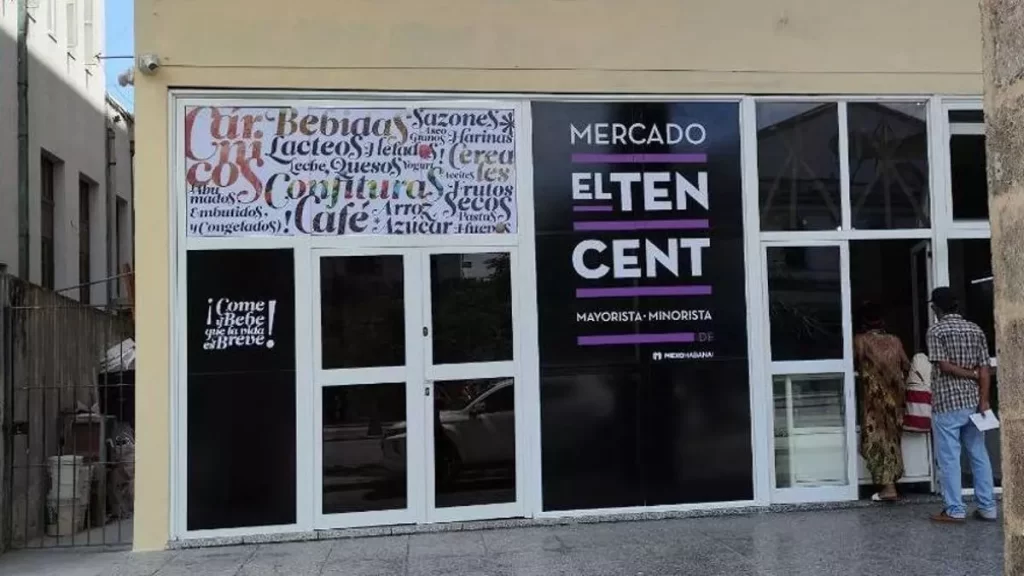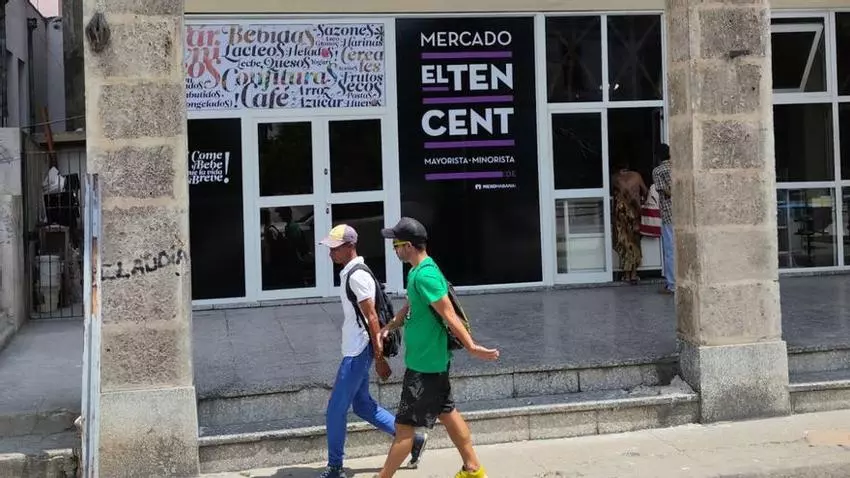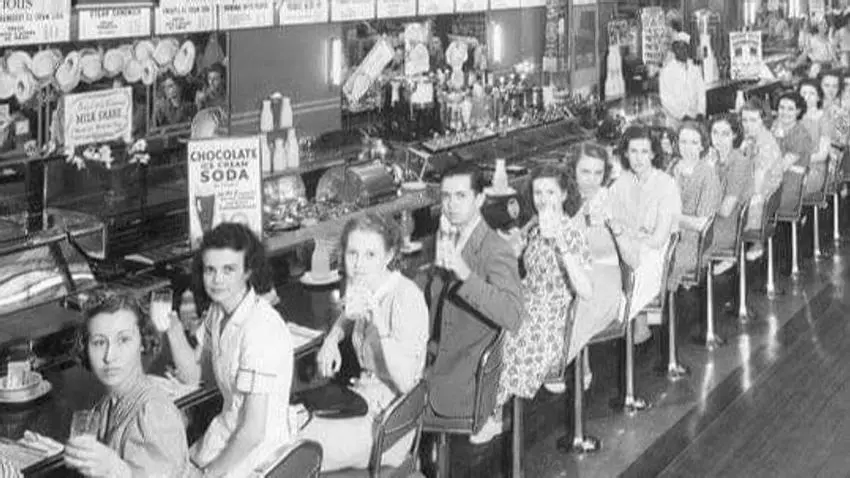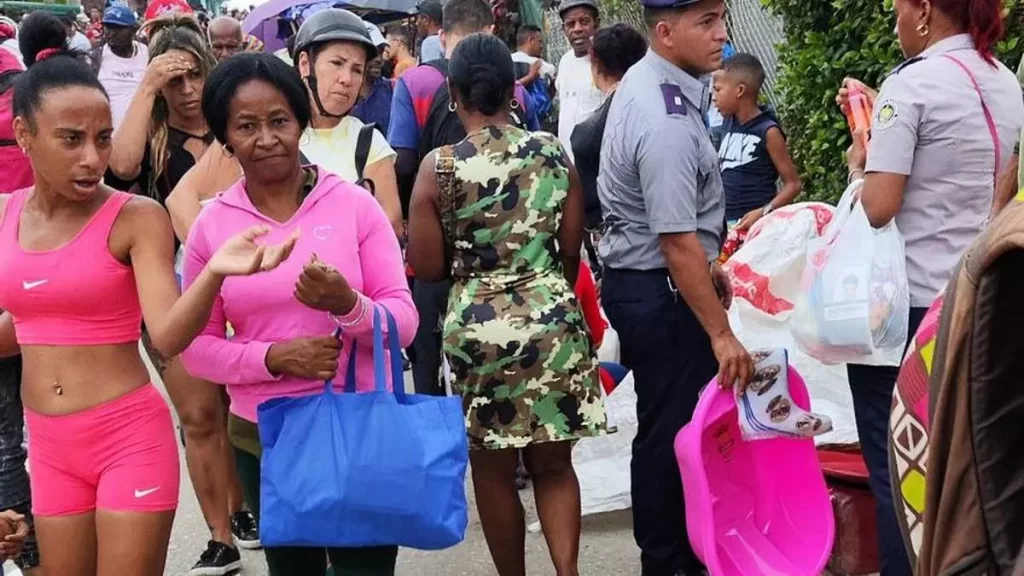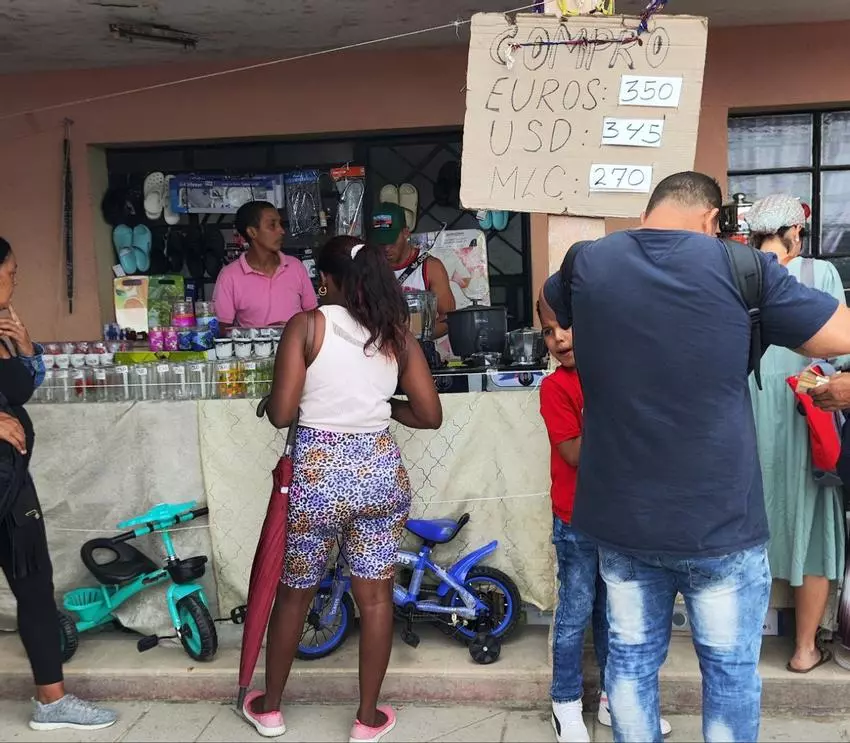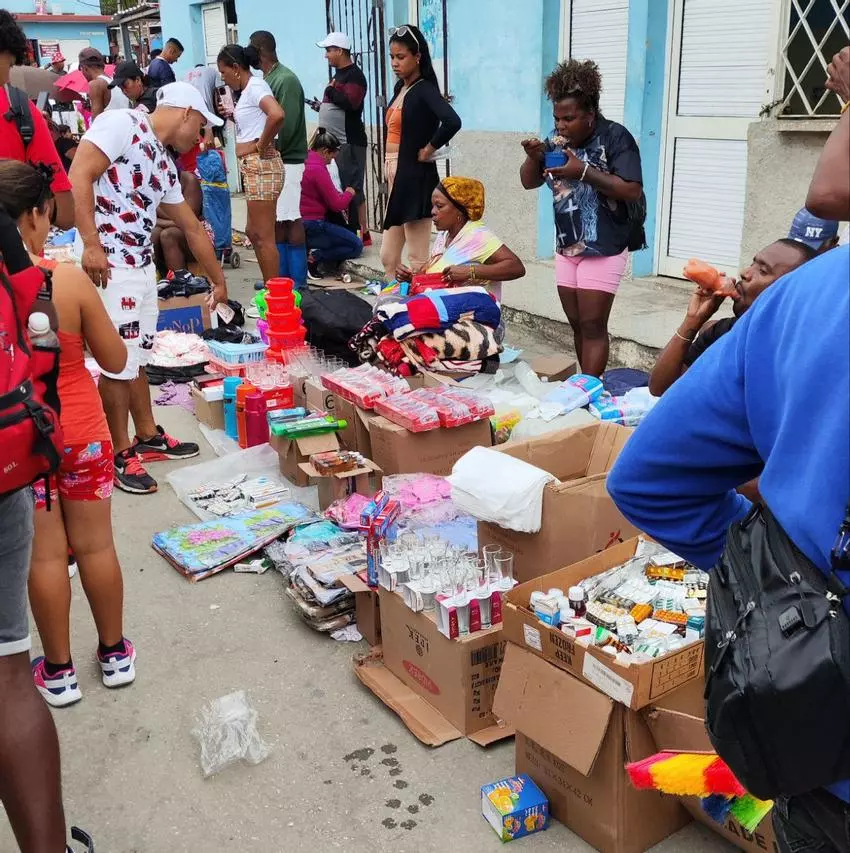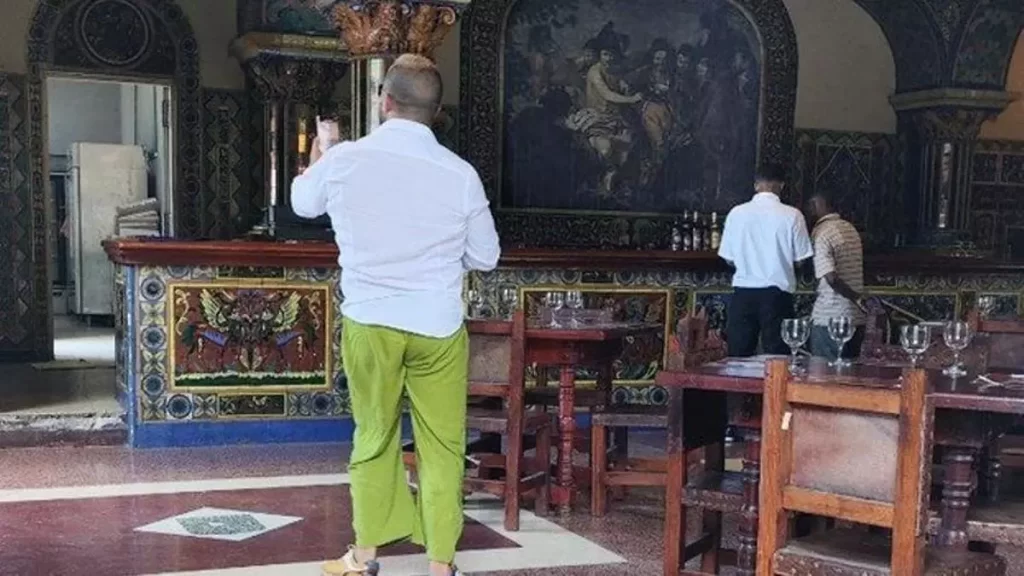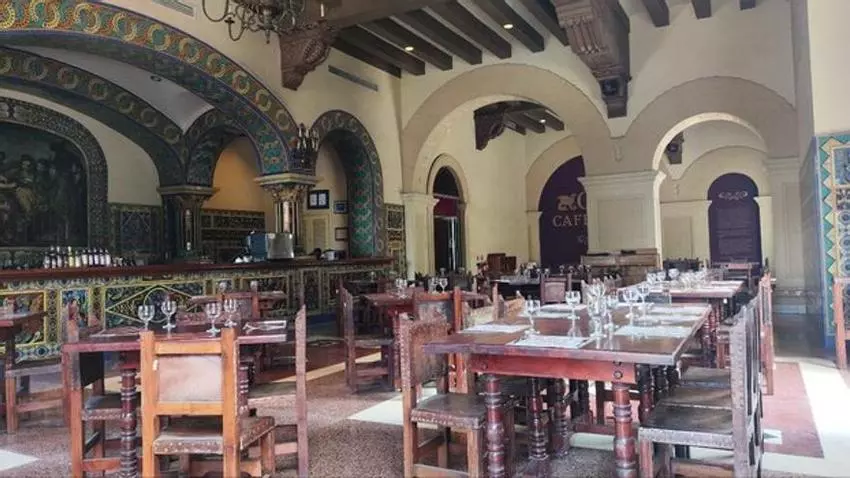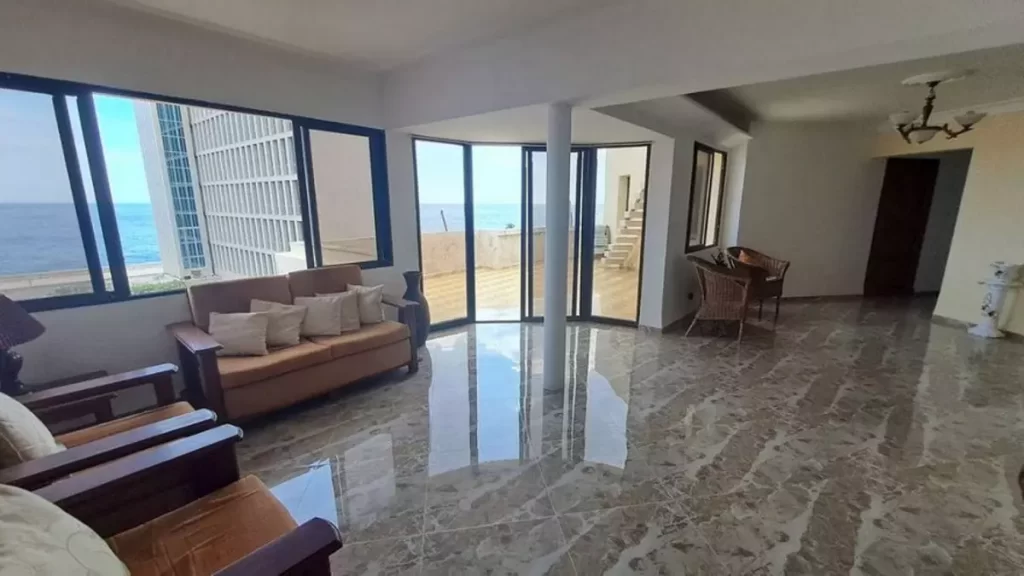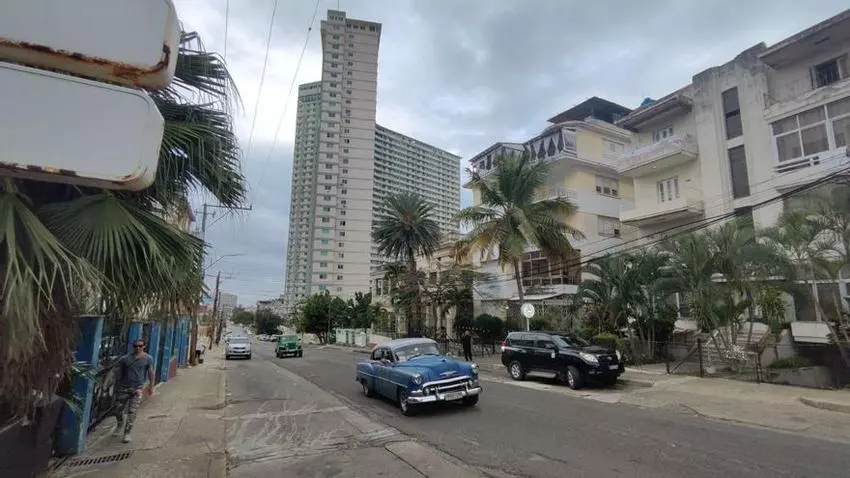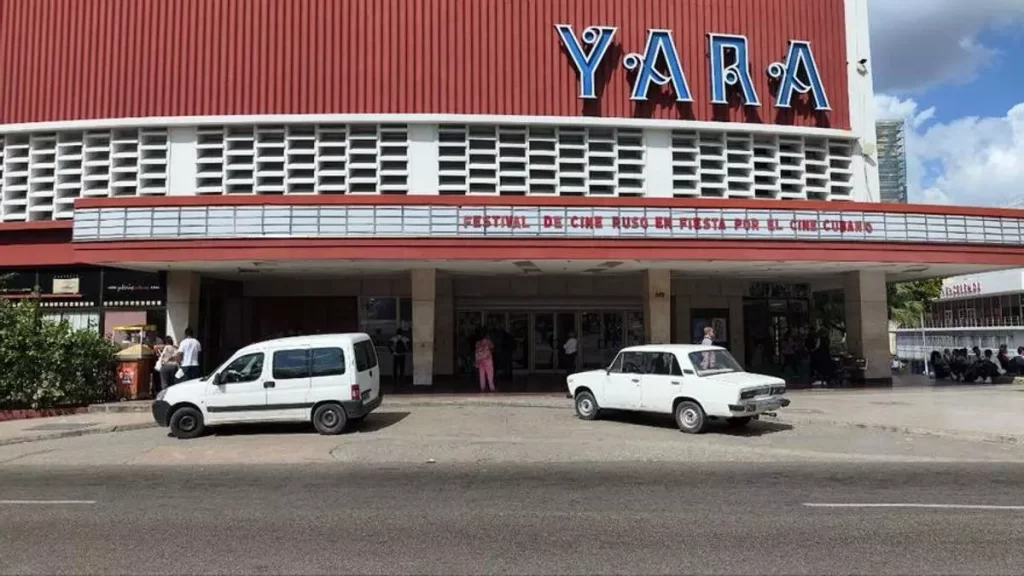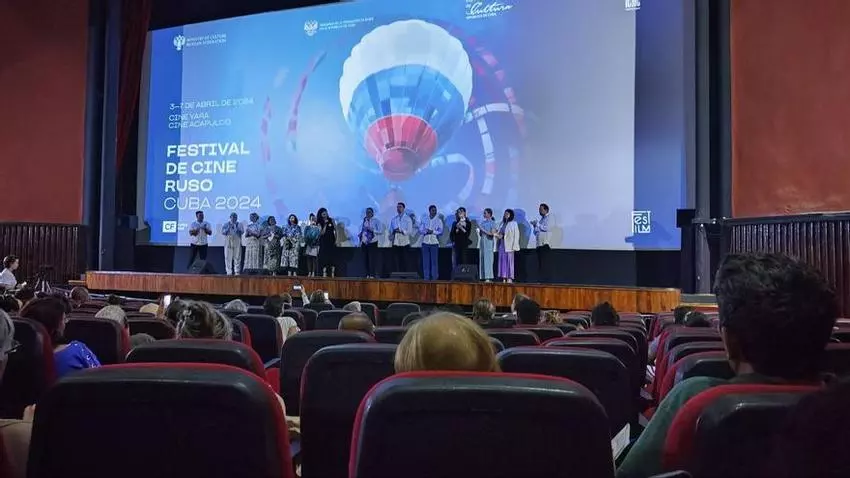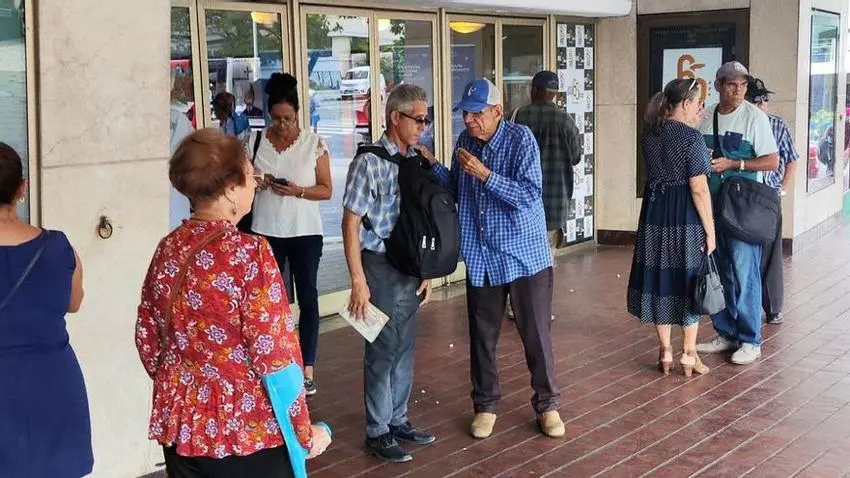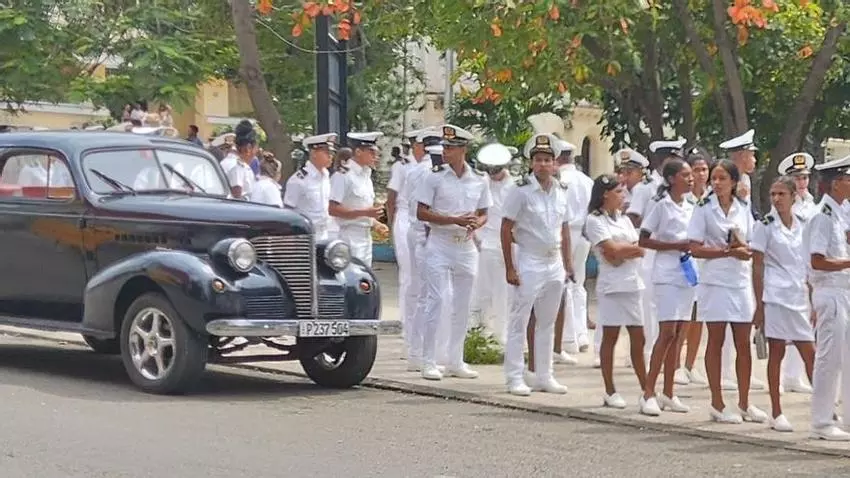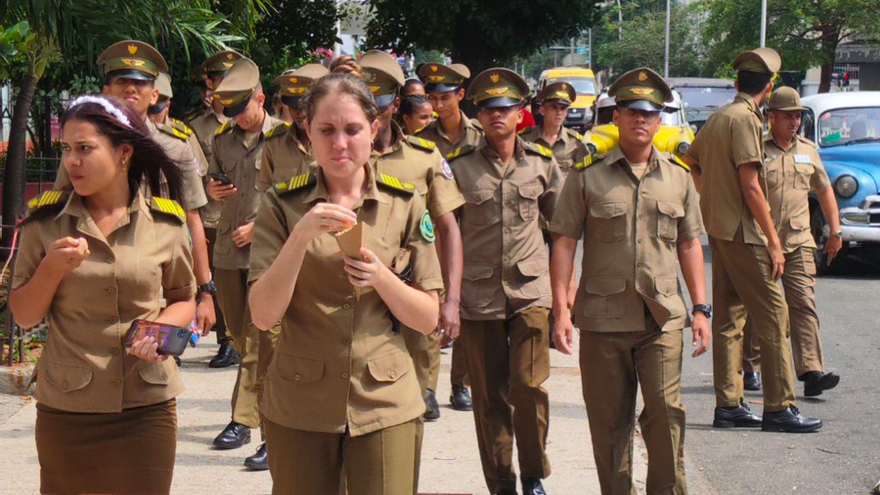
![]() 14ymedio, Juan Diego Rodríguez, Havana, May 7, 2024 — All bubblegum pink and turquoise, the brand new Helados Cid (Cid Ice Cream) location, which opened Friday at 23rd and H streets in Havana’s Vedado district, is a magnet. The place had been under construction for half a year and expectations were at their peak on opening day. Waiting in front were not only a dozen employees – recognizable by their uniform, with pink polo shirts for men and blue for women – but also an equal number of customers.
14ymedio, Juan Diego Rodríguez, Havana, May 7, 2024 — All bubblegum pink and turquoise, the brand new Helados Cid (Cid Ice Cream) location, which opened Friday at 23rd and H streets in Havana’s Vedado district, is a magnet. The place had been under construction for half a year and expectations were at their peak on opening day. Waiting in front were not only a dozen employees – recognizable by their uniform, with pink polo shirts for men and blue for women – but also an equal number of customers.
Until July 2023, the building was occupied by a privately owned establishment that operated as a cafe by day and a bar at night. When it closed, the owners auctioned off the furniture and appliances without further explanation. It was painted in November and scaffolding was erected at its front door. The shiny refrigeration equipment that could be seen from the outside suggested that the new place would remain in private hands. And so it did.
The secret was revealed in February when a sign in the shape of a scoop of ice cream with the name “Sabor Cid” (“Taste of Cid”) emblazoned on top was hung. But it was not until May 3, six months after repairs had begun, that the doors opened and the newly restored premises came to life.

Unlike what has happened with other businesses such as Bueníssimo Sodería Gourmet, which was empty on the day of its opening, people were attracted to Helados Cid and went in. They were greeted by one of the owners, Yendri García Cid, who did not hesitate to ask them what the thought of the ice cream and of their experience. A professional photographer was there to record it all. continue reading
As García Cid told one of the customers, they not only offer domestically produced ice cream but an imported Italian version as well. The former is available in the “house specialties,” listed on the menu as Copa Cid (2,250 pesos), Affogato Cid (790) and Dona Helada (960). It can also be purchased separately in five individual flavors — dulce de leche, chocolate, strawberry, vanilla and hazelnut — which cost 295 pesos for a one-scoop cone or 700 for a three-scoop basket.
Unfortunately, having to import some of the menu items from Italy “makes things more expensive,” explains the owner, who started the business with his brother Henry. Their goal, he says, is to import the raw materials needed to make this type of ice cream themselves.
For now, the high prices for the Italian items – from 760 pesos for a two-scope cone to a selection of five scoops for 1,875 – do not seem to be deterring customers. Of the privately owned competitor brands such as Clamanta, Gustó or Los Olivos, which have already bested the state-owned Coppelia, now only a shadow of its former self, Cid seems to be the most highly regarded. This is confirmed by the lines of customers at stores, restaurants and dessert shops to which, until now, it was only sold wholesale.

Helados Cid describes itself on its website as “a family business” that was founded 17 years ago. “We have gradually perfected the production processes which have allowed us to offer ice cream of various flavors and formats on an industrial scale.” Initially, the company delivered their tubs of ice cream using an old 1950s American sedan outfitted with a refrigerator but soon switched to a truck of considerable size. They also went from making only ice cream to making other dairy products such as yogurt.
Currently, the prosperity of the firm — it is registered as #286 on the Ministry of Economy and Planning’s list of micro, small and medium-sized companies — has garnered the interest of both the state press and government officials. “Many residents of the capital today delight in Cid Ice Cream,” Radio Rebelde gushed two years ago, highlighting its “variety of flavors, packaging that describes it as creamy and, according to its slogan, ‘as tasty as life itself’.”
Around the same time, the municipal government of Bauta, a town in Artemisa province where the brothers’ dairy factory is located, ran an article on the company. It reported on a visit by the then-ambassador of Argentina, Luis Ilarregui, and the Argentinian director of Frishers, Hernán Oms, whose company supplied the factory’s machinery. A few months earlier, Humberto Camilo Hernández, head of the Communist Party Central Committee’s Cadre Policy Department, inspected the facilities, “where he took an interest in the quality of the product.”
The blessing of the government officials, however, does not make the company any less competitive. “You can’t say anything bad about this place,” a customer remarked on Sunday as she was leaving, holding her son’s hand. “The quality, the service… It’s not for everyone but it’s worth the price.”
____________
COLLABORATE WITH OUR WORK: The 14ymedio team is committed to practicing serious journalism that reflects Cuba’s reality in all its depth. Thank you for joining us on this long journey. We invite you to continue supporting us by becoming a member of 14ymedio now. Together we can continue transforming journalism in Cuba.


